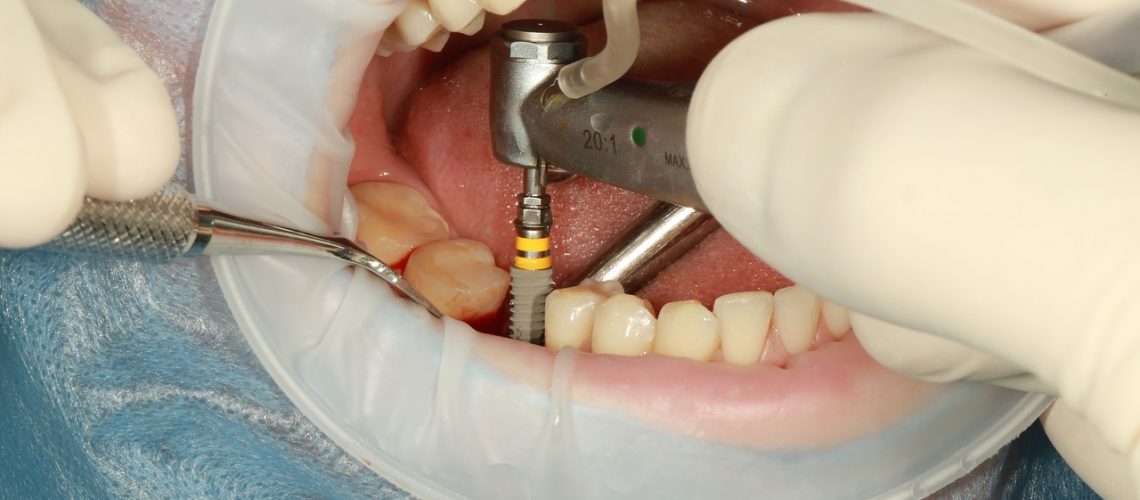The Best Guide To Dental Sense
The Best Guide To Dental Sense
Blog Article
Fascination About Dental Sense
Table of Contents3 Easy Facts About Dental Sense ExplainedA Biased View of Dental SenseThe Best Strategy To Use For Dental SenseExamine This Report on Dental Sense
are medical tools surgically implanted into the jaw to restore an individual's ability to chew or their appearance. They give support for fabricated (fake) teeth, such as crowns, bridges, or dentures. When a tooth is lost because of injury or condition, a person can experience complications such as rapid bone loss, faulty speech, or modifications to eating patterns that cause discomfort.Oral implant systems are composed of an oral implant body and dental implant abutment and might likewise include a joint fixation screw. Front tooth filling. The dental implant body is operatively placed in the jawbone instead of the tooth's origin. The oral implant joint is normally connected to the dental implant body by the joint fixation screw and expands through gums into the mouth to sustain the attached fabricated teeth
(http://peterjackson.mee.nu/where_i_work#c2504)Framework of The Oral Implant System selecting dental implants, talk to your oral supplier regarding the possible advantages and threats, and whether you are a prospect for the procedure. Things to consider: Your general health is an important factor in establishing whether you are a great candidate for dental implants, just how long it will require to recover, and the length of time the implant may stay in area.
Cigarette smoking might impact the healing procedure and decrease the lasting success of the implant. The recovery process for the dental implant body may take a number of months or longer, during which time you typically have a short-lived abutment instead of the tooth. the dental implant treatment: Thoroughly follow the dental hygiene directions offered to you by your dental service provider.
Dental Sense for Beginners
Implant failure can result in the demand for one more operation to take care of or change the dental implant system. Brings back the capability to eat Restores cosmetic appearance Aids keep the jawbone from diminishing as a result of bone loss Preserves the health and wellness of the bordering bone and gums Assists maintain surrounding (neighboring) teeth stable Improves high quality of life Damages to bordering natural teeth during implant placement Injury to the surrounding tissues throughout surgical procedure, such as sinus perforation Injury during surgery (for instance, fracture of surrounding jawbone) Poor feature, such as seeming like the teeth do not attack with each other typically An experience that the tooth hangs or turning in position resulting from an abutment screw loosening up Implant body failing (looseness of the dental implant body) due to systemic infection, which may be a lot more most likely in clients with unrestrained diabetics issues due to regional infection in bone and gums supporting the dental implant body because of delayed healing, which may be most likely in people that smoke Problem cleaning the gums around the dental implant, leading to poor dental health Without treatment periodontal disease Post-surgical pins and needles due to nerve impingement or damages Always notify healthcare providers and imaging professionals that you have oral implants before any magnetic vibration imaging (MRI) or x-ray treatments.
FDA is not knowledgeable about any unfavorable events reported for MRI or x-ray treatments with dental implants. Oral implants systems are usually made from materials that adhere to worldwide agreement requirements of the International Company for Standardization (ISO) or ASTM International. These requirements have details of what makes a secure material.

A dental implant is a framework that replaces a missing tooth. With screw-like gadgets, the specialist inserts a dental implant important link right into the jawbone, and it acts as a support for a fabricated tooth, called a crown.
Not known Details About Dental Sense
Some people are not qualified for oral implant surgical procedure. It is for oral doctors to operate people with: acute illnessuncontrollable metabolic diseasebone or soft cells illness or infectionIf these problems are dealt with, a person can have the surgical procedure. In, dental surgeons avoid from operating people with: If people with any one of the above go through dental implant surgical procedure, there is a higher risk of the dental implant stopping working.

Oral dental implant surgery is an individualized procedure. It's not the very same for everyone. But the following provides a general introduction of what you can anticipate your dental practitioner, dental cosmetic surgeon, periodontist or prosthodontist to do: Put the implant operatively. Provide you time to recover. Connect the post and final crown, bridge or denture.
Next off, your specialist will very carefully place the oral implant into your jaw. If your implant is near the front of your mouth, your dental professional will make a short-lived tooth for you to use until you recover.
Getting The Dental Sense To Work
Your copyright can tell you what to anticipate in your situation. During the recovery stage, your jawbone must fuse to the dental implant. This procedure, called osseointegration, is important for security and long-lasting success. This procedure can take anywhere from 3 to nine months. Sometimes, it might take much longer.
When your dental implant heals, your dentist can connect the joint (small port article) and your last remediation (crown, bridge or denture). This usually takes regarding one hour to finish and might require a 2nd small surgical procedure. You should not feel any discomfort throughout your oral implant treatment due to the fact that your service provider will certainly make use of medication to numb your periodontals.
Report this page